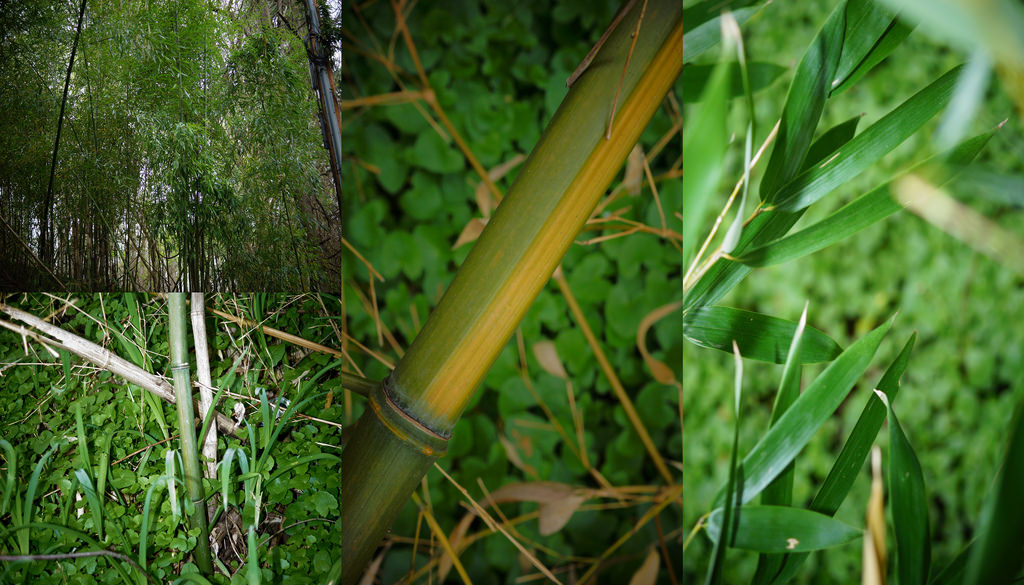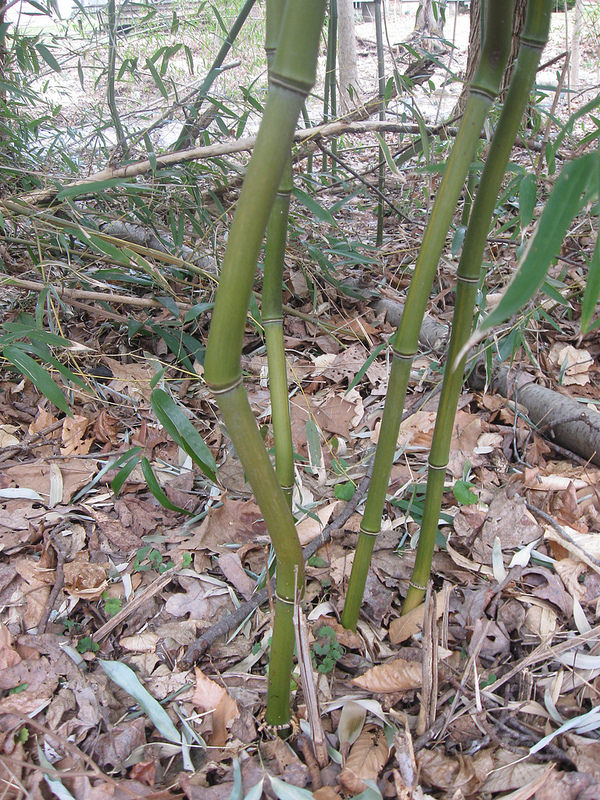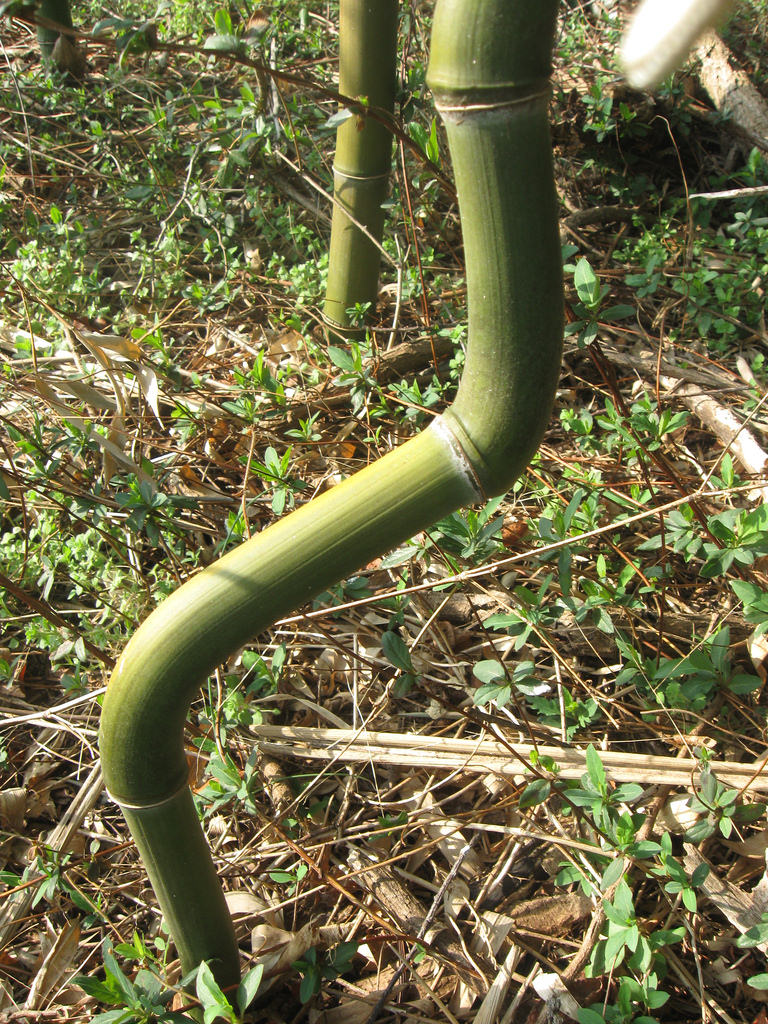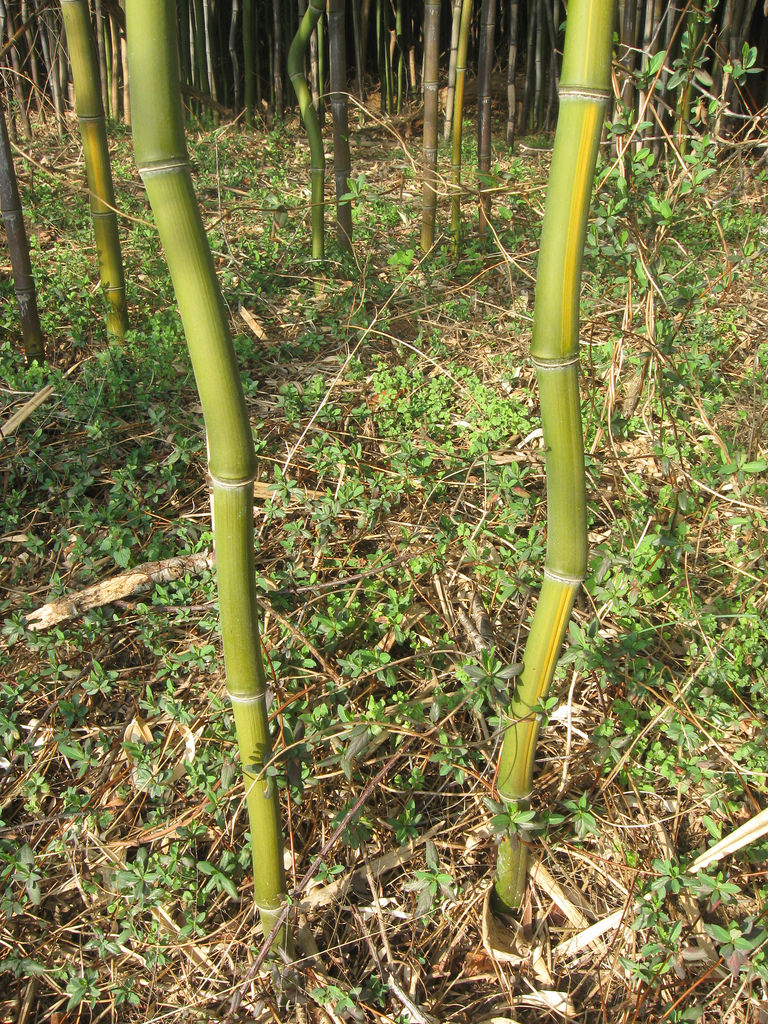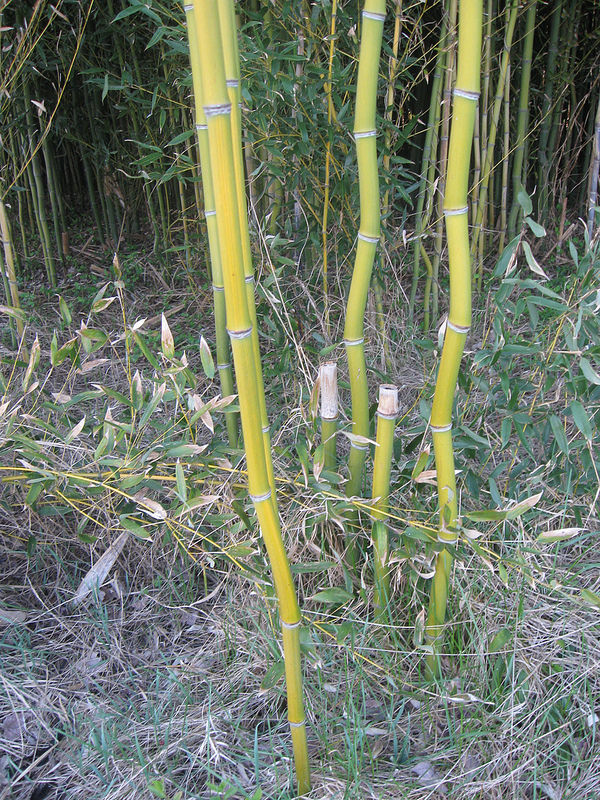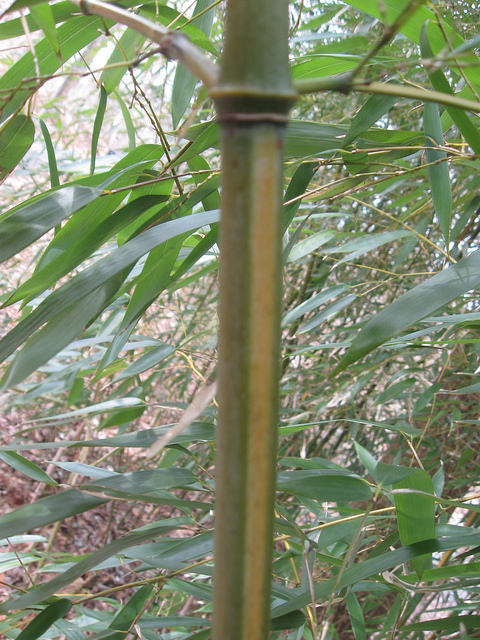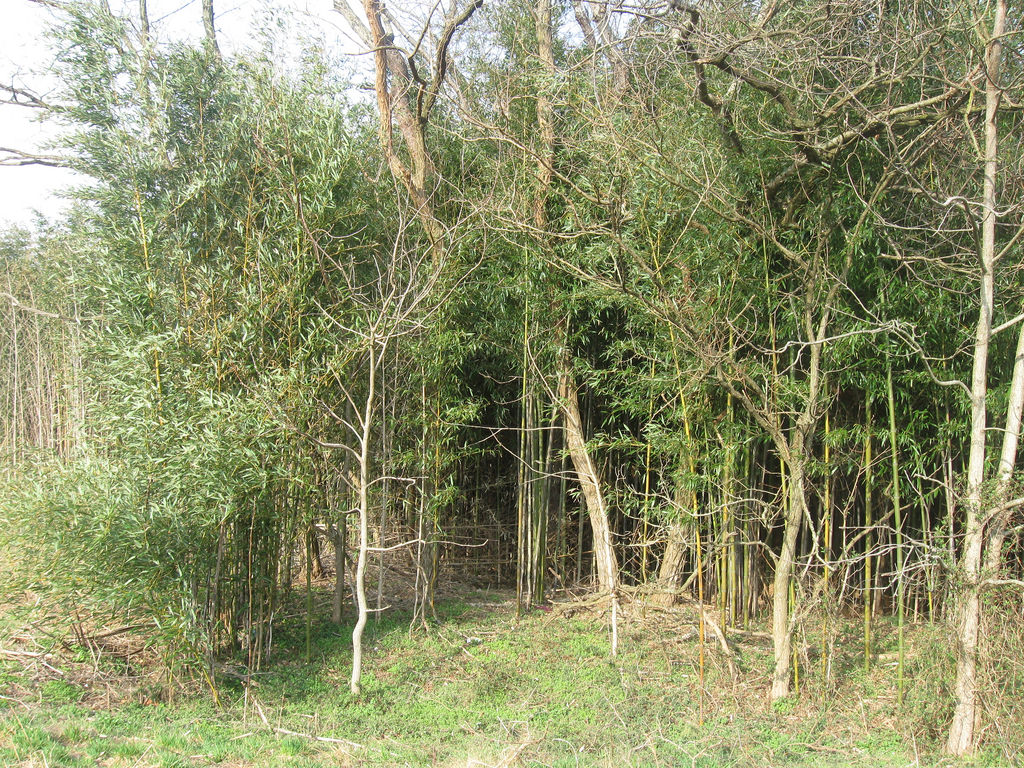Map Snapshot
















55 Records
Status
Yellow Groove Bamboo is native to temperate China but has become a highly invasive species in the United States. This species of bamboo was first introduced to the United States in 1908. Spreads amazingly fast through underground rhizomes. Can thrive in a variety of different habitats but seems to prefer moister soils. In Connecticut it has been proven that swollen streams and rivers can carry detached rhizomes down river. These rhizomes will begin to grow new stations once deposited onto dry ground.
Description
Three main identification points that separate Yellow Groove bamboo from other bamboo species: Culm = stem 1. During the first year or two of the life of the culm a yellow groove (called a sulcus) is found on every other internode (space above branch attachments). 2. There is a slight roughness to the touch on the internodes of new culms. 3. Occasionally the culms will have a striking zigzag growth involving two or three of the lower nodes and internodes, rarely seen in any other bamboo species (Invasive Species Compendium website, 2018). As the culm matures the yellow grooves begin to fade.
Seasonality Snapshot
Source: Wikipedia
| Yellow groove bamboo | |
|---|---|

| |
| P. aureosulcata f. spectabilis | |
| Scientific classification | |
| Kingdom: | Plantae |
| Clade: | Tracheophytes |
| Clade: | Angiosperms |
| Clade: | Monocots |
| Clade: | Commelinids |
| Order: | Poales |
| Family: | Poaceae |
| Genus: | Phyllostachys |
| Species: | P. aureosulcata
|
| Binomial name | |
| Phyllostachys aureosulcata | |
| Phyllostachys aureosulcata | |||||||
|---|---|---|---|---|---|---|---|
| Traditional Chinese | 黃槽竹 | ||||||
| Simplified Chinese | 黄槽竹 | ||||||
| |||||||
Phyllostachys aureosulcata, the yellow groove bamboo, is a species of bamboo native to the Zhejiang Province of China. It is a running bamboo with a distinctive yellow stripe in the culm groove (or sulcus) that is often grown as an ornamental.[1][2]
Description
[edit]This bamboo grows to an expected height of 9 meters (35 feet) with a culm diameter of 4 cm (2.25 inches).[2] In areas where the average winter minimum temperature is above -15°C (5°F), it may grow to a maximum height of 14 meters (46 feet) with a diameter of 6.5 cm (2.6 inches).[3] The typical form of this species has dark green culms with a yellow groove.[1] Culm sheath colors appear purple-green usually striped with yellow.[2] Lower portions of the upright culms occasionally bend in a zigzag pattern.[4]

Distribution
[edit]This bamboo grows in areas ranging from subtropical to warm temperate and tolerates low winter temperatures better than most bamboos, being one of the hardiest bamboos in the genus Phyllostachys.[5] Outside its natural range and areas where the coldest month has mean temperatures of below -4 °C (25 °F), the leaves of P. aureosulcata may not be evergreen and may turn beige and fall off.[citation needed]
In areas with severely cold winters (USDA hardiness zone 5 or colder) in the northern parts of the US, northern Asia, and northern Europe, all growth above ground will die back every winter if temperatures remain below -18 °C (0 °F) for extended periods [citation needed] but will regrow in the spring to 1.8 to 2.4 meters (6 to 8 feet) tall.[3]
Phyllostachys aureosulcata is a popular bamboo in the warmer areas of the United States, Europe, Asia, and parts of Australia. In China it is cultivated and found in Beijing and the provinces Henan, Jiangsu and Zhejiang.[2]
Name
[edit]The culm coloration inspires this bamboo's common name of "yellow groove bamboo" and botanical name of aureosulcata.[6] The all-green cultivar 'Alata' is also known as "crookstem bamboo" due to its characteristic culm bends common to this species.[7]
Usage
[edit]Cultivated mainly as an ornamental, this species is also among the best for edible shoot production, being free of acrid flavor even when raw.[6] An aggressive spreader, its dense upright growth makes a good hedge or privacy screen.[3][6]
Cultivars and Forms
[edit]
Several forms and cultivars of this species exist in a variety of culm color patterns. P. aureosulcata f. spectabilis reverses the colors of the typical form with yellow culms and a green sulcus.[4] This form has gained the Royal Horticultural Society's Award of Garden Merit.[8] The form aureocaulis[9] has all-yellow culms and the cultivar 'Lama Temple' has culms of a brighter yellow that taper more rapidly to a shorter overall height.[10][11][12] 'Harbin' has green culms with multiple vertical ridges and irregular streaks of yellow.[13] Culms of 'Harbin Inversa' appear yellow with many thin green streaks, while lacking the ridges characteristic of 'Harbin.'[14] A sport of spectabilis called 'Argus' shares the same robust growth qualities and color as spectabilis but with additional green vertical stripes scattered around the whole circumference of each culm.[12] The all green form 'Alata' lacks any yellow culm coloring.[7] In spring, yellow portions of new aureosulcata culms that receive direct sunlight during the early cool hours of the day can develop a red tint or magenta blush that lasts for a couple months.[4][10][11][12][14]
Regulations
[edit]New York state and Connecticut have regulations listing Phyllostachys aureosulcata as a prohibited invasive species.[15][16]
References
[edit]- ^ a b "Bamboo Garden - Phyllostachys aureosulcata". Retrieved 2009-07-02.
- ^ a b c d "Phyllostachys aureosulcata in Flora of China". Retrieved 2009-07-02.
- ^ a b c "Lewis Bamboo - Phyllostachys aureosulcata (Yellow Groove Bamboo)". Retrieved 2011-05-24.
- ^ a b c "Bamboo Garden - Phyllostachys aureosulcata 'Spectabilis'". Retrieved 2009-07-02.
- ^ "Hardiness ratings". Archived from the original on June 19, 2012. Retrieved 2012-06-19.
- ^ a b c Umberto Quattrocchi (2006). CRC World Dictionary of Grasses. CRC. p. 1705. ISBN 978-0-8493-1303-5.
- ^ a b "Bamboo Garden - Phyllostachys aureosulcata 'Alata'". Retrieved 2011-05-12.
- ^ "RHS Plant Selector - Phyllostachys aureosulcata f. spectabilis". Retrieved 6 February 2021.
- ^ "RHS Plant Selector - Phyllostachys aureosulcata f. aureocaulis". Retrieved 30 June 2013.
- ^ a b "Bamboo Garden - Phyllostachys aureosulcata 'Aureocaulis'". Retrieved 2009-07-02.
- ^ a b "Bamboo Garden - Phyllostachys aureosulcata 'Lama Temple'". Retrieved 2011-05-12.
- ^ a b c Paul Whittaker (2005). Hardy Bamboos: Taming the Dragon. Timber Press, Inc. pp. 135–139. ISBN 978-0-88192-685-9.
- ^ "Bamboo Garden - Phyllostachys aureosulcata 'Harbin'". Retrieved 2011-05-12.
- ^ a b "Bamboo Garden - Phyllostachys aureosulcata 'Harbin Inversa'". Retrieved 2011-05-12.
- ^ "Lands and Forests Emergency, Proposed & Recently Adopted Regulations". Retrieved 2014-05-06.
- ^ "Proposed Regulations: 6 NYCRR Part 575 Prohibited and Regulated Invasive Species Express Terms". Retrieved 2014-05-06.
